Located in northwestern Monroe County, Mount Carmel cemetery is well worth a visit. It contains several outstanding carved limestone monuments, including one shaped like a locomotive engine, complete with engine number. The cemetery also contains the largest native cedar trees I have ever seen in Indiana, one of them easily a yard in diameter at the base.
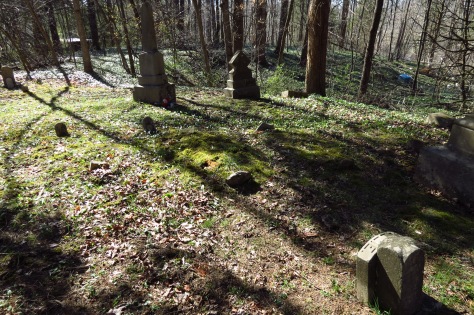
The locomotive gravestone was erected to the memory of young Emory Titzel, a Monon Railroad worker who died aged 22 in 1902 due to a rail accident. “His Last Trip” is engraved on the base of the monument.
The gravestone is also notable because there is a glass walled compartment beneath the locomotive. The sun shines blearily through the heavily streaked plate-glass windows. The viewer assumes that this compartment originally held a bouquet or everlasting wreath, but over the last century whatever was originally contained inside has crumbled away to a handful or two of black compost.
There is also an outstanding “tree stone” monument shaped like a craggy tree with ivy climbing up it. On one branch is carved a stonecarver’s maul, as if it had been placed there casually while the worker rested for lunch, and on another branch rests a hammer head (the handle presumably having broken off over the years). Information gathered by the Monroe County History Center states that the stone honors William Willard, a Welsh-born stonecutter.
The huge cedar trees are outstanding. I hazard the guess that they were planted when the headstones at their bases were set in place, because over the past century-plus they have become so massive that their trunks are now pushing the headstones over. The stones cannot be easily read but are simple rectangles, which leads me to guess that they date to the 1870s or ’80s. If this is true, the trees are 130 or 140 years old.
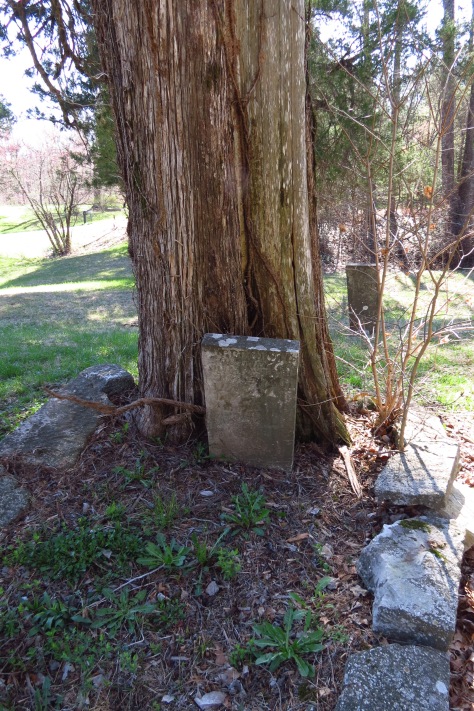 The cemetery is arranged on all sides of what appears to be a deep sinkhole, and the ground is sloping and uneven. The thing that is most memorable (and dare I say it, creepy) about Mount Carmel is that many of the graves have fallen in as their contents have rotted away. Several graves are so hollow that last fall’s brown leaves are pooled at the bottoms. A whole series of graves that were originally surrounded by limestone sills have fallen in so significantly that the sills have sprawled out of line and are now broken.
The cemetery is arranged on all sides of what appears to be a deep sinkhole, and the ground is sloping and uneven. The thing that is most memorable (and dare I say it, creepy) about Mount Carmel is that many of the graves have fallen in as their contents have rotted away. Several graves are so hollow that last fall’s brown leaves are pooled at the bottoms. A whole series of graves that were originally surrounded by limestone sills have fallen in so significantly that the sills have sprawled out of line and are now broken.
One monument (a child’s, perhaps?) resembles a sinking ship. Even the locomotive monument is falling forward into the grave beneath. Sighting along a line of monuments shows just how far these heavy stones have settled out of the perpendicular. Half the stones at Mount Carmel remind the viewer of the leaning tower of Pisa.
And yet, despite the sunken graves and the tilting gravestones, Mount Carmel is intimate, beautiful, and surprising. It’s one of the historic gems of Monroe County and will afford you a pleasant drive in the country while getting there. From Highway 46, take Stinesville Road north. When the road begins to descend the long hill towards the little town, turn left at the quarry, which will be Mount Carmel Road. Stay to the left at the Y. The cemetery is not far, past two right-angle corners in the road, on the right. There’s a gravel pull-off long enough for one or two cars.
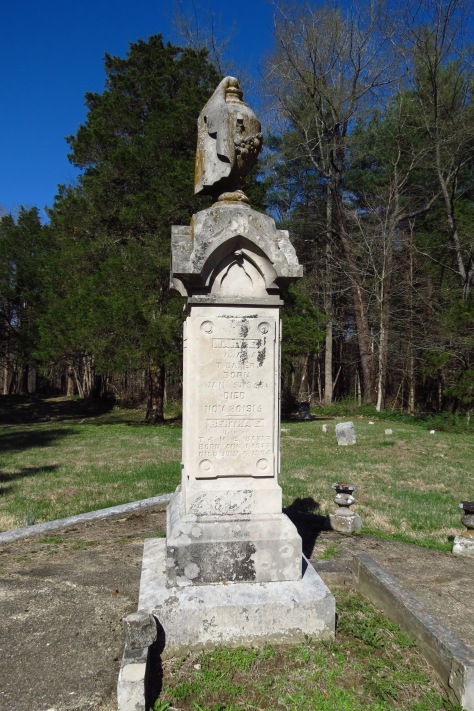
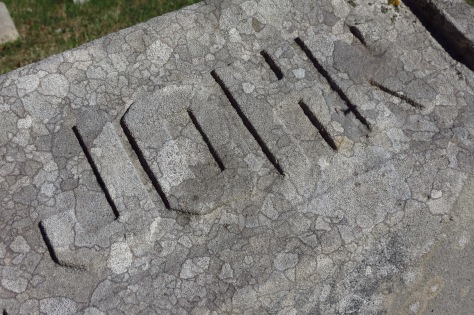

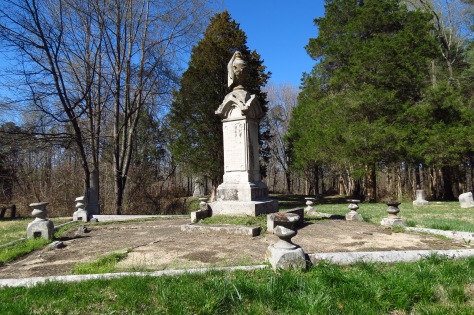
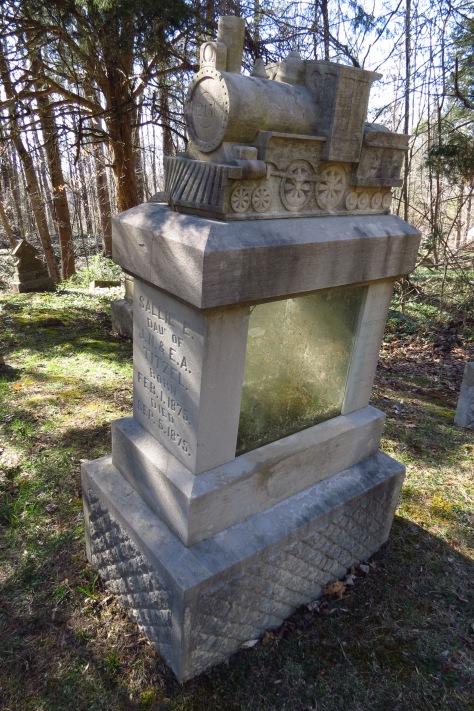
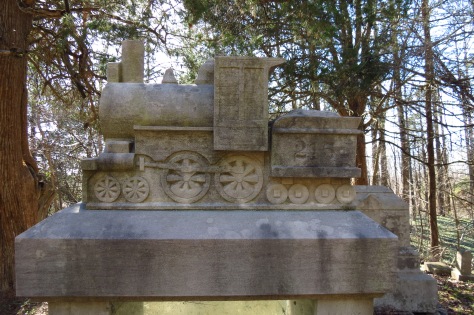
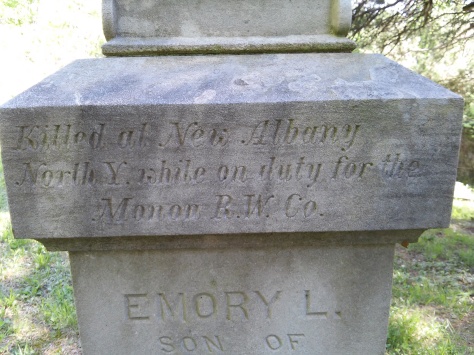
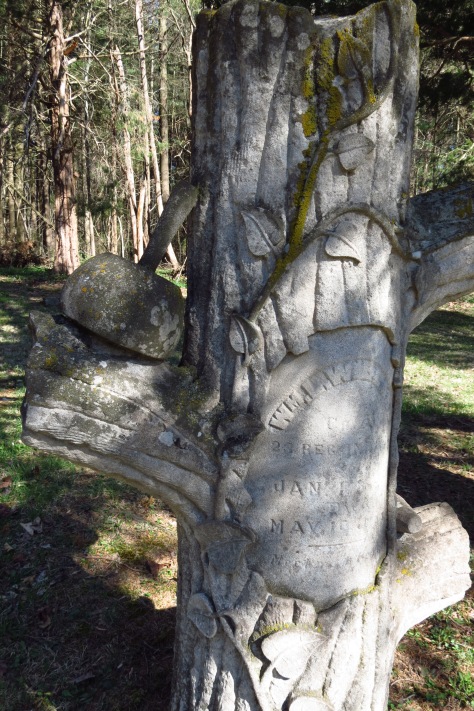
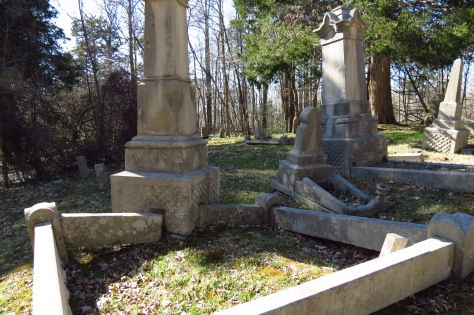
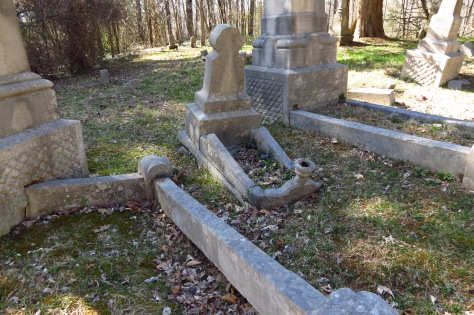
Have you ever checked out the little one south of 46 on 135? Up on a little bluff, on the eastern side… Loving you, M
Sent from my iPhone
>
LikeLike
I’ve never seen that one, but I’ll put it on my list and take a look for it. Thanks for suggesting it! 🙂
LikeLike
spectacular cemetery reportage, Carrol! That locomotive is cool.
xxo
Liz
LikeLike